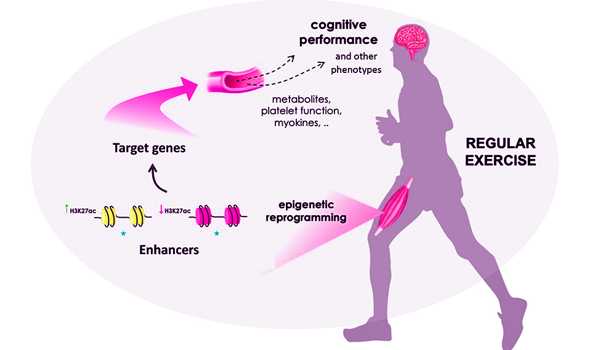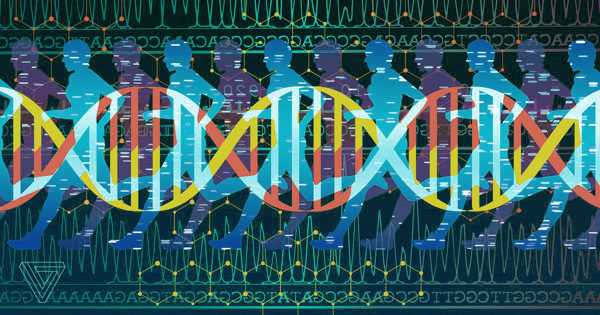Six weeks of physical activity resulted in epigenetic changes in skeletal muscle cells in young men. These changes occurred in regions of the genome that have previously been linked to disease. According to the researchers, their findings demonstrate how exercise remodels DNA in skeletal muscle, allowing new signals to be established to keep the body healthy.
While it is widely accepted that regular physical activity reduces the risk of virtually all chronic illnesses, the mechanisms at work are not fully understood. Now, researchers at the University of Copenhagen have discovered that the beneficial effects of physical exercise may be due in part to changes in the structure of our DNA. These changes are referred to as ‘epigenetic’.
Epigenetics is a fancy term for the study of the factors that influence how our genes function. These factors cause changes on the outside of your genes, a process known as methylation. Methylation alters a gene’s ability to receive and respond to biochemical messages from the body.
The molecular instruction manual found in all of our cells is DNA. Some sections of our DNA are genes, which are instructions for building proteins (the building blocks of the body), whereas others are enhancers, which regulate which genes are turned on or off, when, and in which tissue. For the first time, the researchers discovered that exercise rewires enhancers in regions of our DNA are known to be associated with disease risk.
Scientists have discovered that the beneficial effects of physical exercise may in part result from changes to the structure of our DNA.
“Our findings provide a mechanism for the well-known health benefits of exercise. We provide a list of direct targets that could mediate this effect by linking each enhancer to a gene “Professor Romain Barrès, senior author of the study published in Molecular Metabolism, from the Novo Nordisk Foundation Center for Basic Metabolic Research.
A three-month study involving 23 adult men and women was conducted by researchers in Stockholm, Sweden. They had them exercise on a bicycle, but only one of their legs was used. The other leg functioned as a control.
As a recall, the control in an experiment is constant. The variable is the thing (or things) that change depending on what the scientist is experimenting with. Typically, the control and the variable are derived from separate sources. However, in this case, both the control and the variable we’re on the same person (unexercised leg = control, exercised leg = variable).

Exercise improves the health of organs including the brain
The researchers hypothesized that endurance exercise training changes the activity of gene enhancers in skeletal muscle. They gathered a group of fit young men and put them through a six-week endurance training program. The researchers took a biopsy of their thigh muscle before and after the exercise intervention to see if there were any changes in the epigenetic signature of their DNA after training.
The scientists discovered that after completing the endurance training program, the structure of many enhancers in the young men’s skeletal muscle had changed. They discovered that many of the regulated enhancers have already been identified as hotspots of genetic variation between individuals – hotspots that have been associated with the human disease – by connecting the enhancers to genetic databases.
The researchers hypothesize that the beneficial effects of exercise on organs other than muscle, such as the brain, are largely mediated by regulating muscle factor secretion. They discovered, in particular, that exercise remodels enhancer activity in skeletal muscle that is linked to cognitive abilities, opening the door to the identification of exercise training-induced secreted muscle factors targeting the brain.
The exercised leg was stronger at the end of the study, as expected, indicating physical improvements to the muscle. However, microscopic examinations revealed that over 5,000 locations on the muscle tissue of the exercised legs showed signs of new methylation patterns, whereas the unexercised leg tissue did not. The majority of the altered genes were associated with metabolism, insulin response, and muscle inflammation.
“Our findings show a functional link between epigenetic rewiring of enhancers to control their activity after exercise training and disease risk modulation in humans,” says lead author Assistant Professor Kristine Williams.
















